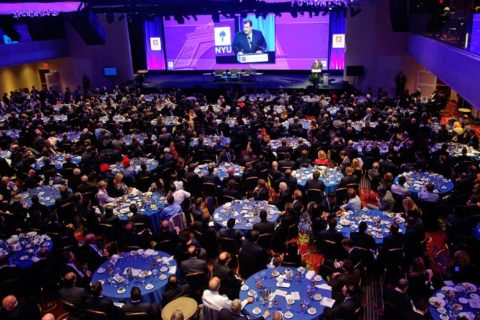Image: Ali Hoyt of STR addresses attendees during the Industry Overview session Day One of The Lodging Conference 2017. Photo credit to Stephanie Ricca via Hotel News Now.
Late last month, members of the AXIS/GFA leadership team once again made the trip to Phoenix for the 2017 installment of The Lodging Conference. Recognized as one of the most important events on the hotel industry’s calendar, the 2017 event saw a number of changes to the event’s format, most notable of which was the hosting of the conference later in the year – a change which provided the benefit of additional clarity for keynote analysis and breakout discussion. Amidst that analysis and discussion two questions stood out: Could the hospitality industry finally be post-cyclical? What impact might the proliferating number of hotel brands have on hotel development?
Contemplating a post-cyclical industry
Regular readers of The Praxis will no doubt recall a common theme in our post-Lodging Conference reports in recent years has been the industry’s ongoing inability to identify when the current growth cycle would end. In our October 2016 blog post, “The end of the cycle is near…but this time we think we mean it.”, we capture how attendees of last year’s Lodging Conference went out of their way to rationalize the imminent end of the current cycle – something they had done in the previous two years as well. With the opening of the 2017 Lodging Conference, it was clear analysts had grown weary of predicting the end of a cycle that stubbornly refuses to capitulate, and instead had started to consider that new fundamentals might be at play. While average daily rates may have peaked in many key markets as indicated by Ali Hoyt, Senior Director of Consulting and Analytics at STR in her Day One keynote address, demand continues to outpace supply, while RevPAR in those markets is anticipated to continue to grow through 2019. The result is either a very soft landing to the cycles in those indicator markets, or, as Stonebridge Companies President and CEO Navin Dimond captured it, the market is starting to operate under new fundamentals where down-cycles are seemingly very similar to growth cycles – and potentially equally profitable. In either case, developers are likely to continue to find success in minor markets through 2019 as guest demand and consumer-side fundamentals continue to keep the industry moving in a positive direction.
Opportunity with increasing brand segmentation
As developers look to increase supply to satisfy that curiously ever-growing demand, hotel companies like Marriott and Hilton are compelled to consider new approaches. Mature brands – like Courtyard by Marriott and Hampton by Hilton – are starting to become saturated in many major markets. Unlike Starbucks however, having two of the same hotel down the street from one another is not a viable option. The solution? Brand segmentation and spin-off soft brands. A perfect example of this approach is Wyndham Hotel Group, which issued a release to coincide with the 2017 Lodging Conference announcing the addition of another six hotels to its soft brand collection, bringing the total number of hotels in their soft brand portfolio to 61.
For 2018 and into 2019, underdeveloped minor markets can expect to see an increase in the number of select and limited service spin-off and soft brand projects. For hotel architects, designers, and builders, a de-emphasis of brand prototypes is expected – even for limited service properties – as developers look to provide a unique stay experience to differentiate their property from the hotel being built across the street.


